
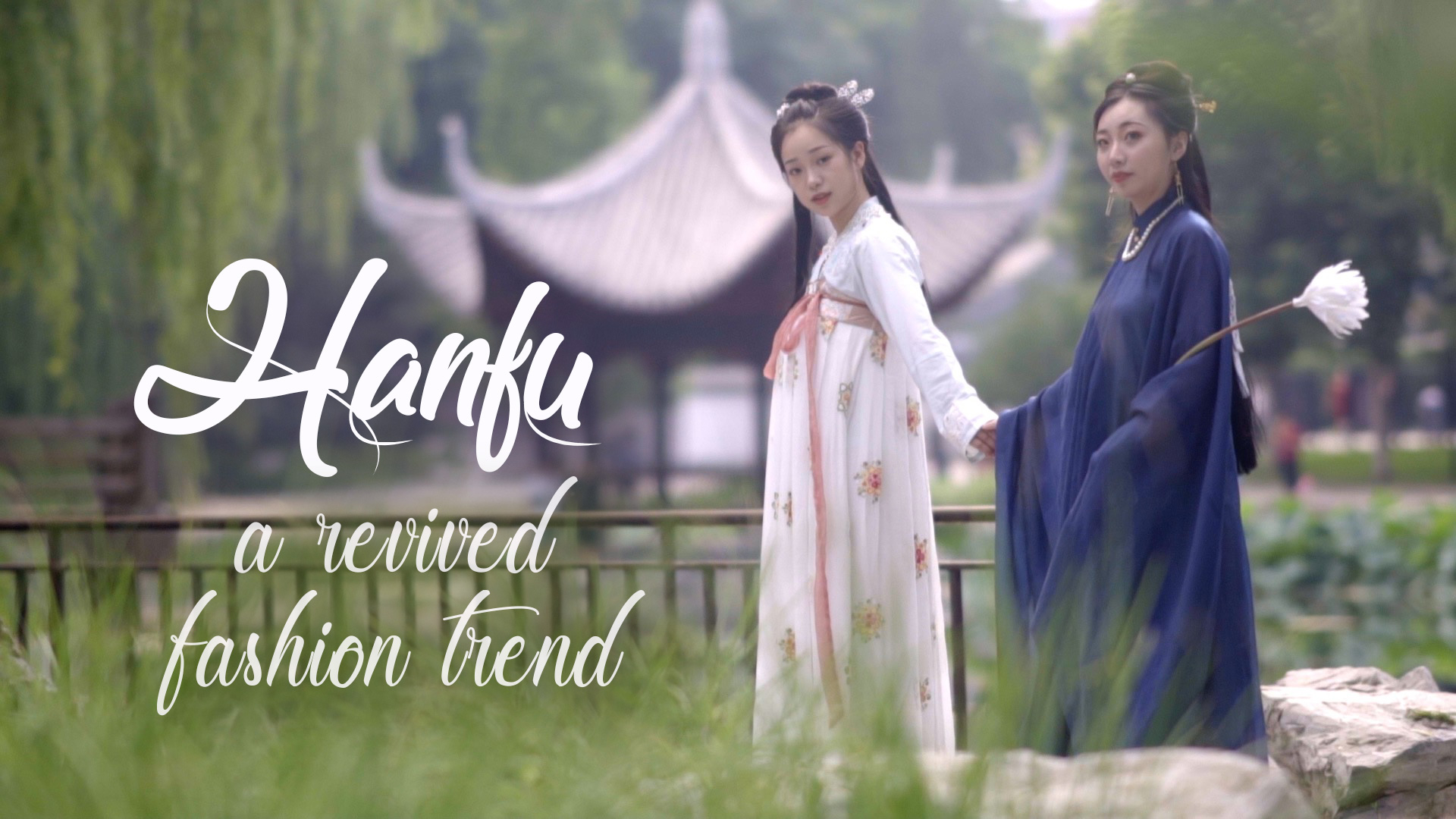
What are you wearing today?
Suits and ties are formal. T-shirts and jeans are street style. A fancy dress could be festive. But those choices are all too common for most people.
In China now every day, on the street or in the park, hanfu can be seen time and again. Although the revival of the traditional clothing for Han people has been a trend for some years, it still looks very unique whenever it is worn.
According to the estimate of a hanfu-related website, over two million hanfu were purchased by the end of 2018. In the "2018 Hanfu Consumer Report" published by Tmall, the largest e-commerce platform in China, the number of hanfu buyers increased by 92 percent on a yearly basis. According to a survey on hanfu wearers, the average age is only 21, with 52.14 percent between 19 and 24.
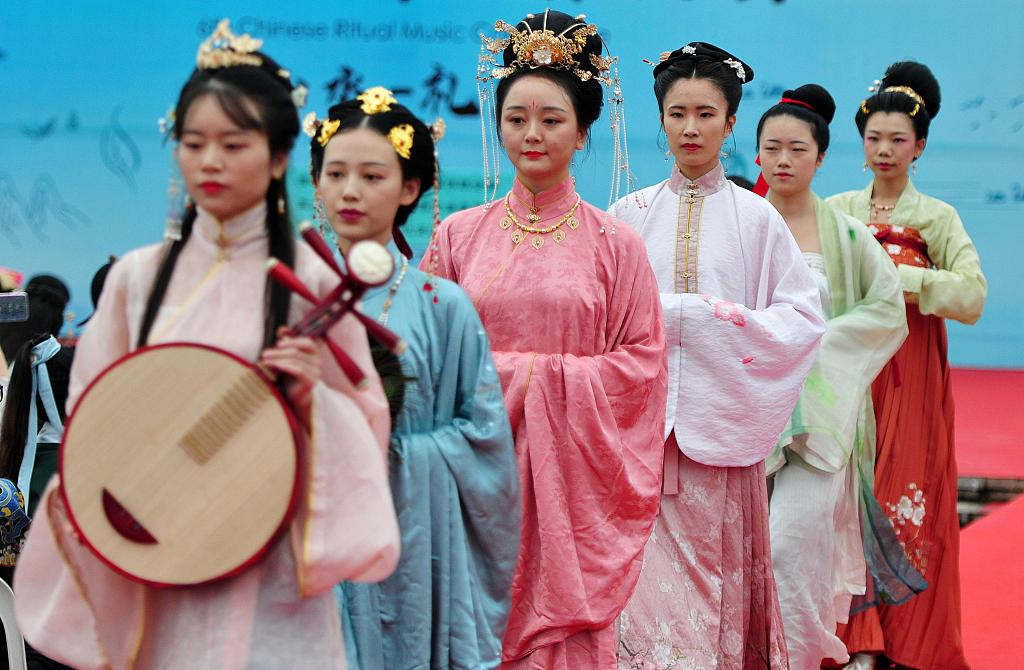
Hanfu fans show various types of hanfu in Nanping, Fujian Province, November 3, 2018. /VCG Photo
The hanfu is not a niche market or a fad anymore, but an emerging trend entering mainstream fashion and chased by an increasing number of young Chinese.
But what is the hanfu, and why it becomes so popular?
The revival of traditional clothing
Hanfu - which literally means "Han clothing" - is the traditional clothing for Han Chinese, an ethnic group compromising more than 90 percent of the population of China. So the evolution of hanfu goes together with the rise and fall of Han people in ancient Chinese history.
Specifically, for times like the Yuan Dynasty (1271-1368), when Mongolian's took power, and the Qing Dynasty (1644-1911), when the Manchu ruled the country, what those ethnic minorities wore deeply affected the clothing for Han people, and left a blank page for Han clothing’s own characteristics.
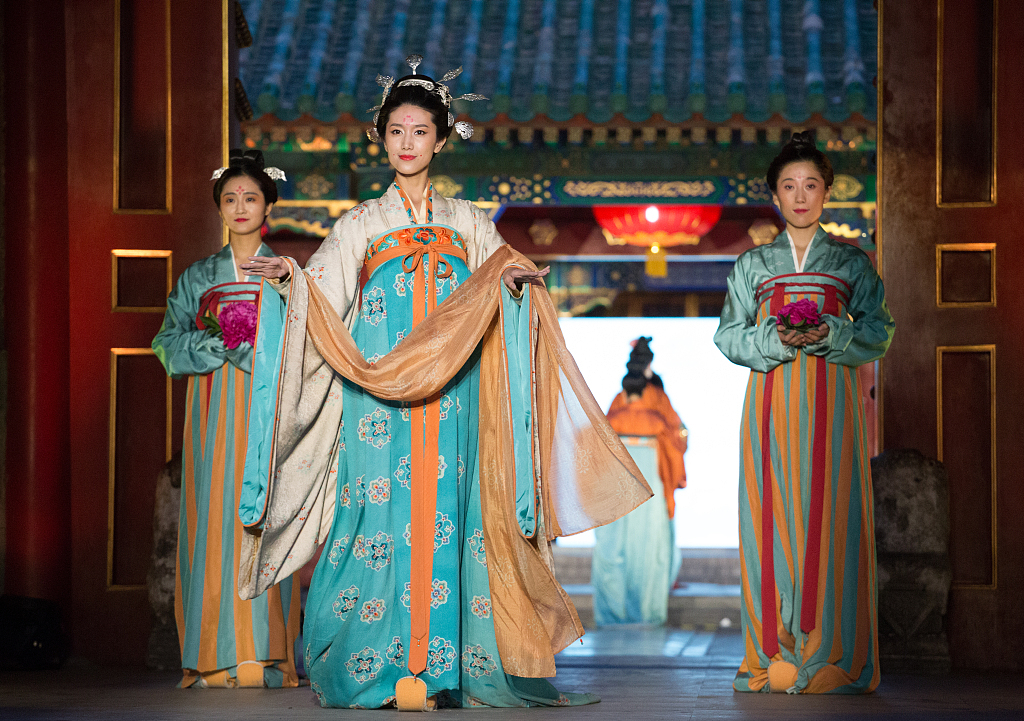
A typical hanfu of the Tang Dynasty. /VCG Photo
Among the intermittent development of hanfu, the clothing forms of the Tang (618-907), Song (960-1279), and Ming (1368-1644) dynasties are especially popular among young Chinese.
Take women's clothing as an example. Hanfu for the Tang Dynasty usually features chest-high long dress, which highlights the curve of women's chests while hiding belly fat. It goes with the sense of beauty in that time, when people preferred curvy figures rather than slim ones.
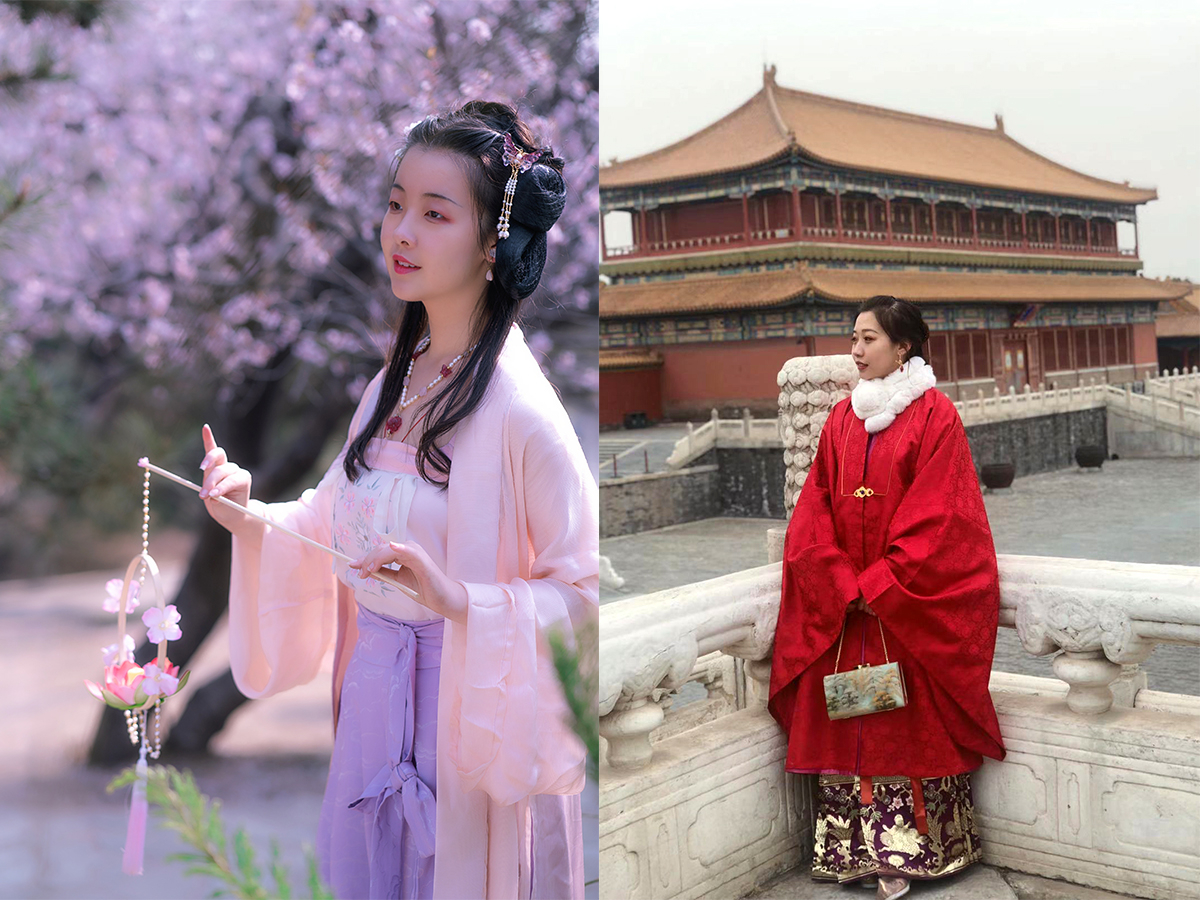
A combined photo shows the hanfu of the Song Dynasty (L) and the Ming Dynasty. /Photo courtesy of Qingzhi(L) and Wu Yue(R). Please don't use without authorization
In the Song Dynasty, the culture changed as the Cheng-Zhu School of thought became dominant. Abstinence was encouraged and although women wore tight-waist dresses which could show their figure, a trunk-like loose coat called a "beizi" was usually worn when they left the home. Hanfu in the Ming Dynasty, meanwhile, often features a long shirt with the fringe of the flour-touching inner dress standing out, creating an elegant and poised air for the wearer.
The traditional beauty on modern streets
Qingzhi, a law student from Communication University of China, wears hanfu to class every day. She said her biggest passion is that she can explore various outfits within her hanfu collection and each new look can give her a sense of achievement. When making the match, she also uses modern elements like high heels, sunglasses and hats, but the final look is always harmonious.
"It gives me endless inspiration every day. I can discover a new self every single day."
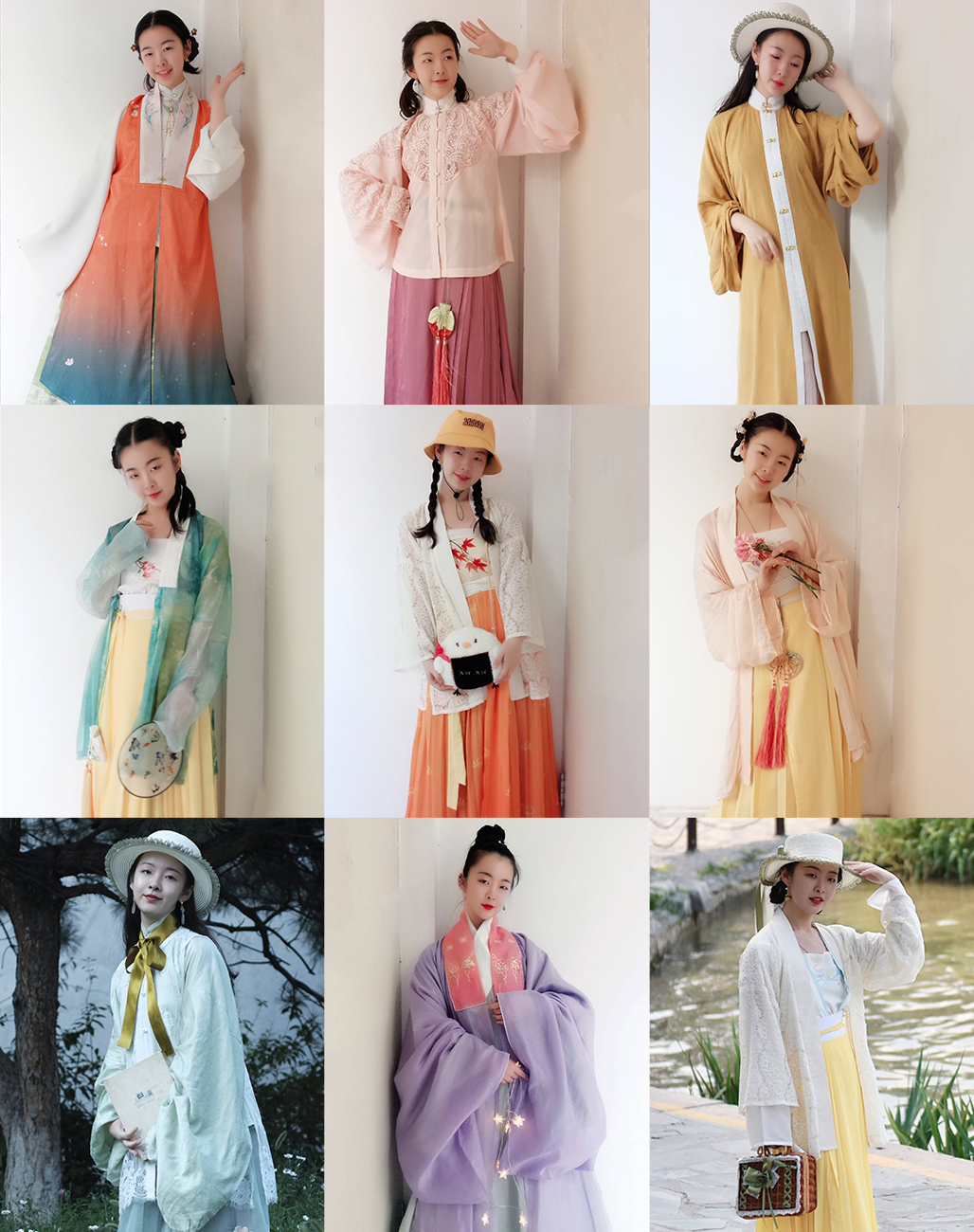
A combined photo shows Qingzhi in various types of hanfu. /Photo courtesy of Qingzhi. Please don't use without authorization
The data shows more than half (52.94 percent) of the people would like to wear hanfu daily like Qingzhi does, but it doesn't mean a large number of people can actually wear a hanfu every day. The long-sleeves and various layers are too hot for summer and the ancient form is also sometimes inconvenient for the modern world. For young people, the frequency and occasions for wearing a hanfu depend more on personal preferences, rather than rigidly following an ancient rule.
Dafan, a 24-year-old girl who just graduated from college, wears hanfu on festivals, cultural events and friendly outings with other hanfu fans. For her, the hanfu is a costume for special occasions and moods.
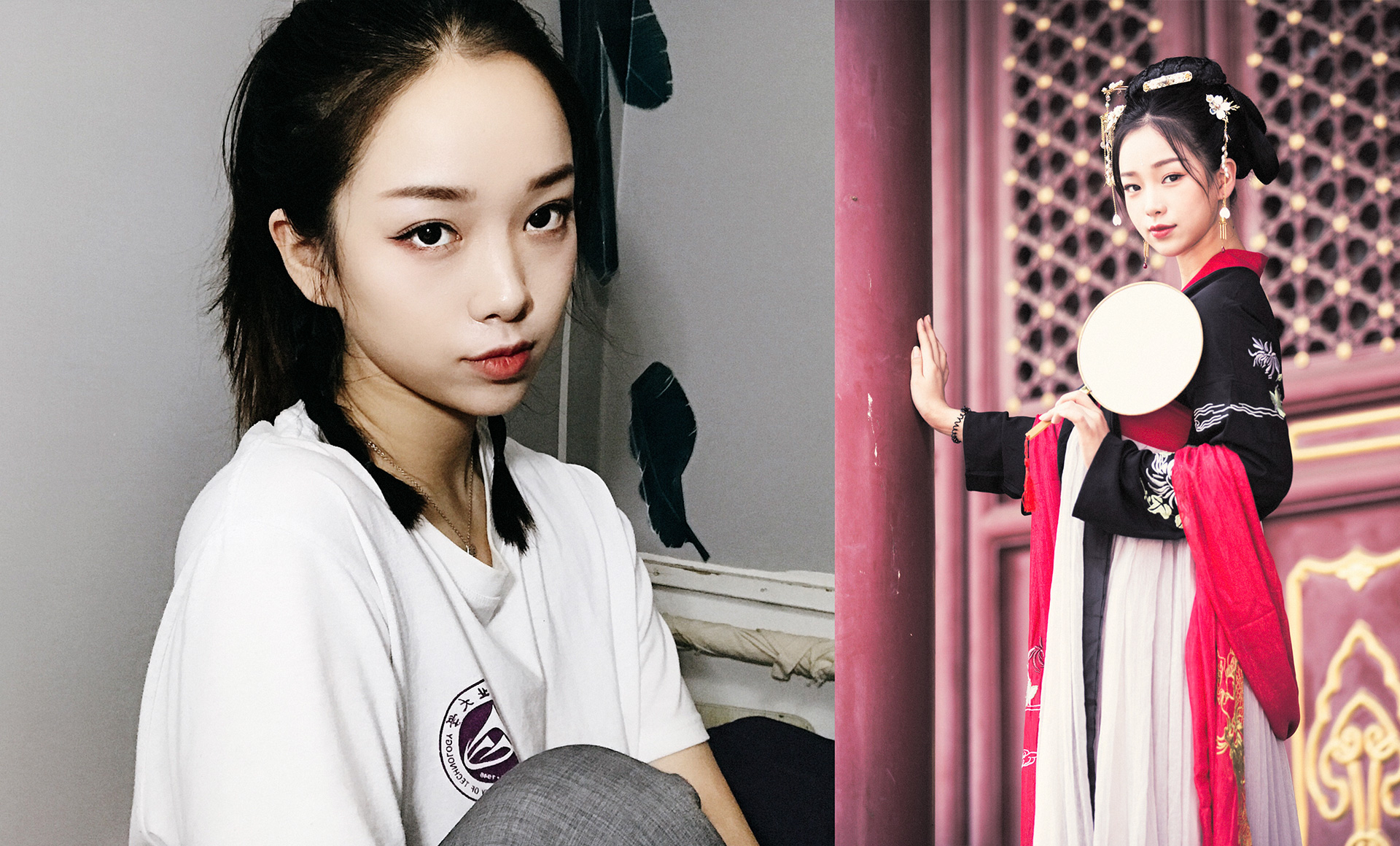
A combined photo shows Dafan in daily clothing(L) and in hanfu(R). /Photo courtesy of Dafan, please don't use without authorization
Wearing a hanfu is a method for her to escape from the troubles and frustrations of real life, she said. Modern clothing, on the other hand, represents the actual identity people need to perform every day.
"Hanfu and the modern clothing help me to 'release' the different sides in me," she said.
Nanhe, who's 21, is a leader of a costume society called "ZGBF Studio" that she started with several friends last year. To her, what to wear for a day totally depends on her mood. The final selection could be hanfu, a cosplay costume, a Lolita dress or just normal everyday wear.
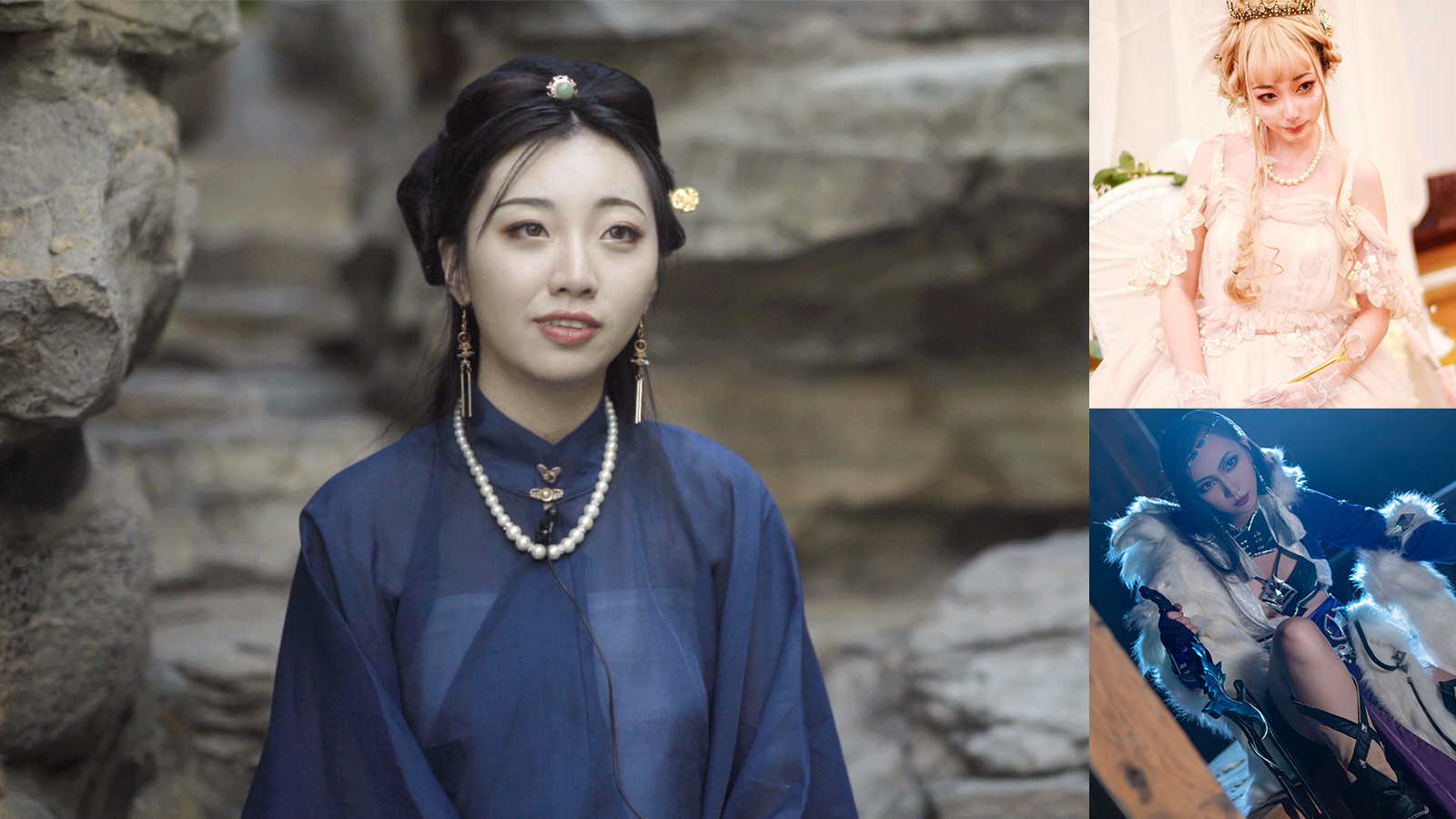
A combined photo shows Nanhe at the interview with CGTN (L). Nanhe in Lolita dress (R, up) and cosplay costume (R, down). /CGTN Photo (L). Other photos courtesy of Nanhe (R). Please don't use without authorization
She said she loves the hanfu simply because it’s "beautiful." But to promote it she has deeper reasons.
"What’s behind our hanfu is a succession, or inheritance of the Huaxia (Chinese) civilization," She said. "Maybe the hanfu represents the national spirit. We wear the Han clothing, like other ethnic minorities wear their own clothing for their own festivals. I love that."
Videographer: Huang Yichang
Video editor: Huang Yichang
Animation and special effect: Pan Yongzhe
Copy editors: Matthew Watson, Bertram Niles, Oscar Margain, Josh McNally
Voiceover: Matthew Watson
Article written by: Jiang Qingrui
Cover font designer: Zhang Xuecheng
Collage designer: Qu Bo, Zhang Xuecheng

Copyright © 2018 CGTN. Beijing ICP prepared NO.16065310-3
Copyright © 2018 CGTN. Beijing ICP prepared NO.16065310-3